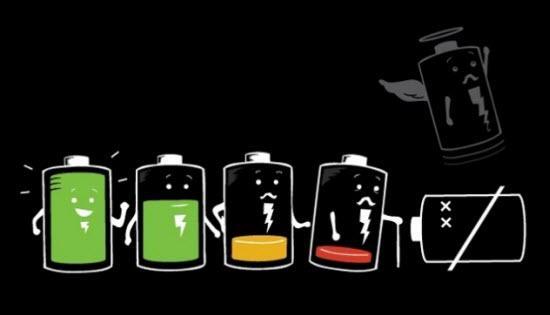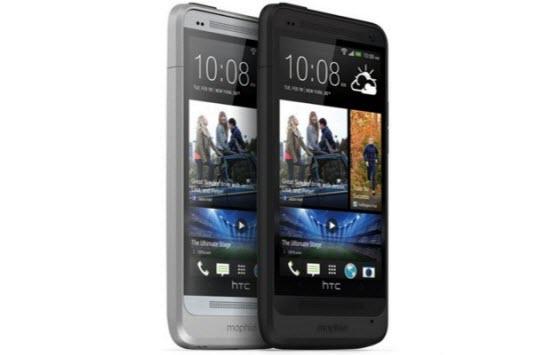
When it comes to smartphones in 2013, battery size is all the rage. No matter your mobile OS, the amount of time you can spend away from a wall outlet is easily one of the most important reasons to choose one handset over another. But before you reach for that external battery or spare juice pack, don't you want to know a few ways you can save some power all on your own?
Let's be real. Between texting your squeeze (or video chatting), streaming Ultimate Dog Tease (maybe that's just me), and tweeting celebrities (because they can run, but they can't hide), battery life ranks at the bottom of my list every single time I drain it dead. Do we really need to surf Reddit, or Instagram our Salmon sashimi?
Absolutely.
So, is there really any legitimate way to save power for extended periods of time without significant trade-offs?
There is a slight glimmer of hope if a group of researchers at Stanford have anything to do with it, and it has to do with nanostructures. But first, here's how our lithium-ion batteries work. Present day lithium-ion batteries are rather inefficient in that discharging them moves lithium ions from the negative electrode to the positive side. This movement creates dispelled energy that powers our mobile devices. As if the process didn't sound odd enough, batteries have the innate tendency to retain less power the more times they're charged and discharged. This is where Stanford has made significant progress.
According to MIT Technology Review, nanostructures could boost battery life fivefold and help store upwards of twice the amount of energy as lithium-ion batteries currently do. The science behind nanostructures is in the sulfur by-product of lithium batteries, lithium sulfide, which causes intermediary compounds called polysulfides to form, thus limiting the amount of lithium which can be stored in a lithium-ion battery.
If I lost you, don't worry. In lamens terms, batteries have a limitation of storage capacity due to the chemical reactions which take up space in each lithium-ion battery. The nanostructures help increase storage capactity of lithium-ion batteries after multiple charges. The Stanford researchers have primiarly focused on electric vehicle batteries, but have said that they can "retain 80 percent of their capactiy for as many as 3,000 charging cycles."
It's quite a relief to hear that battery technology is not being left in the dust. Far too many times have I heard stories of friends and family strolling into any of the Big Four wireless carriers and being told to "adjust system settings." Most of the time, adjusting system settings will get you by with noticeable results, but it's a farcry from a solution. In my experience, I simply do these tweaks without even noticing it because I've grown so accustomed to saving power throughout each day. Reducing display brightness (or turning off auto-brightness which is a known battery hog), turning off data when you don't need it (or 4G LTE/using Wi-Fi as often as possible), and disabling apps which automatically sync to only update manually are some of the most popular ways to save some Lithium for later.
But realistically, the last thing you need to worry about is a dim display in a hot summer day (especially if you have an smartphone with an AMOLED screen). So, there are apps on all mobile operating systems that supposedly help, though your results will vary.
On Android, apps like Juice Defender and Qualcomm Snapdragon's Battery Guru (if you have a Snapdragon-powered smartphone) claim to save you some power in a variety of ways. Each of these apps syncs with your apps and mobile connections to learn your habits with functions that claim to make a difference in the end. By switching on and off data after a set amount of time, limiting app syncs in the background, and disable other functions like Bluetooth and location-based services after a battery threshold, battery life should be improved.
On iOS and Windows Phone 8 devices, there are equivalent battery-saving apps like Battery Doctor Pro and BatterySense which operate in a similar fashion to their Android counterparts albeit with less control. You're more likely to run into a "battery-saving" app in Apple's App Store which itemizes system processes and gives you a rundown of how much battery usage you're pacing throughout the day, than an app that will intervene in background processes like Android. And Windows Phone 8 has a built-in Battery Saver Mode along with the ability to turn off background tasks, so that's always helpful.

But in the end, saving battery often times comes down to whether or not your smartphone has a removable battery, and it shouldn't. There are plenty of outside sources that allow you to save battery while keeping the svelte profile of a smartphone with a nonremovable battery.
Manufacturers are no doubt moving towards built-in batteries, with Apple staying steadfast and true to their initial ploy in the mobile spectrum of nonremovable power packs, and HTC/Motorola leading the Android pack.
Manufacturers like Anker and Mophie are at the forefront of improving battery life if you're away from a wall outlet. But even these options are somewhat limited in that there is a trade-off associated with power packs (an increase in size) and external batteries (an extra device to carry around).
In short, battery technology has not been forgotten, and if the mobile industry's prowess in delivering the latest technological frontiers is any inclination as to what's to come, battery life isn't too far behind as evidenced by the researchers at Stanford.
So, reader - how do you manage to save battery throughout day? Does a traditional Li-ion battery that can be recharged many more times while retaining significant battery capacity sound like the right direction to solve our battery woes? Hit the comments below!
Image via Engadget.